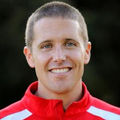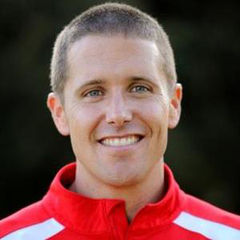Last Updated July 3, 2024 (originally published August 31, 2017)
The last days of summer are slipping away and school is about to start!
Any change in schedule is challenging, particularly for kids. The first few weeks of school are a difficult time for parents and teachers to capture and channel kids’ energies effectively. The good news is that the back-to-school wellness tips presented below can help clear mental and physical cobwebs brought on by a summer of “slacking.”
The body and brain have a reciprocal relationship. The brain tells the body what to do, and then the body gives information back to the brain, helping it decide what to tell the body to do next. When the brain and body work together frequently to overcome challenges, they both continue to develop for a lifetime.
Additionally, more and more research on children is finding that when they move more, they not only make their brains better at guiding movement, they actually improve their ability to learn. In fact, a recent study demonstrated an association between levels of cardiorespiratory endurance, muscular strength, flexibility, and coordination and adolescent cognitive performance. Other research suggests that physical activity is positively associated with academic performance.
Below are three ways movement can help focus and even expand kids’ (and adults’) physical and mental energy this back-to-school season, along with some activities that groups of kids can do at home or in the classroom to help build stronger brains and bodies.
Increase the Heart Rate
The brain needs oxygen and glucose to function effectively. Assuming we are healthy and thriving, this “good stuff” gets to our brain when our blood circulates. More circulation means more good stuff to the brain. What’s the easiest way to increase blood circulation? Move!
Any activity that increases our heart rate helps get more oxygen and glucose to the brain. Research suggests that aerobic exercise, in particular, may increase development of the hippocampus—the area of the brain largely responsible for memory and learning. Additionally, aerobic exercise appears to increase the amount of brain-derived neurotropic factor, which is type of protein that aids in the growth of brain cells.
Have your kids try this quick, simple and fun aerobic activity to boost brainpower:
ABC Adventures
-
Children begin in a standing position.
-
Begin telling or reading a simple story. Instruct the children to run in place as fast as they can when they hear a word that begins with the letter G.
-
Children continue to run in place until they hear a word that begins with the letter S, at which point they must freeze on one leg and stay balanced until they hear the next word that begins with G.
-
If they are unable to stay balanced for the appropriate amount of time, they must do five jumping jacks, and then they can rejoin the game.
-
Continue for two to three minutes.
-
Consider adding other movements designated by letters, (e.g., sit, hop in place or turn in a circle).
Cross the Midline
The brain is made up of the left and right hemispheres, each with important and distinct functions. An important “bridge,” called the corpus collosum, connects the two sides of the brain and allows information to pass from one side to the other.
Imagine a line running from the top of the head to between the feet that cuts the body into equal right and left halves. When we perform an action that requires us to cross this midline (e.g., reach our right hand to our left hip), it requires a large amount of information to pass through the corpus collosum quickly in order to coordinate the two hemispheres of the brain. The result is better physical coordination and mental cognition.
Have your kids try this “cross the midline” activity for killer coordination and concentration!
Crazy Callouts
-
Children begin standing.
-
Instruct them to touch a limb or appendage from the right side of the body to a limb or appendage on the left side of the body. For example, “touch your right thumb to your left kneecap.”
-
As the children are able to keep up with commands, increase the speed and difficulty of the tasks.
-
To increase the challenge, have them close their eyes or stand on one leg.
-
Continue for one to two minutes, or however long the children are engaged.
Rhythm
Some degree of rhythm, cadence and synchrony are all part of nearly every movement the brain and body work together to create. These “temporal” abilities are also essential for academic skills like understanding language and grammar.
Research suggests that when children learn to follow rhythm through dance and other activities, it improves the ability of neurons in the brain to communicate. The result is better coordination, in addition to a more organized, efficient and effective process of learning.
Challenge your kids with a little rhythm for mega mental power.
Movin’ to the Beat
-
Children begin standing.
-
Select a simple calisthenic exercise such as a jumping jack.
-
Select one child to begin the activity by setting a tempo by clapping, stomping or making any other rhythmic sound.
-
The rest of the children must perform the calisthenic exercise to this beat.
-
About every five seconds, point to another child to take over the rhythm, at any cadence they want.
-
The group of children must adjust their movement cadence to match the tempo.
-
Continue for one to two minutes, or for as long as the children stay engaged.
These are just three of the many ways movement can focus and expand a child’s physical and mental energy. Use these activities as a start and continue to move, play and foster the development of the body and the brain.
Here’s to an energized school year!
Check out this article for more Fitness Games for Kids, including video demonstrations!
If you are a health coach or exercise professional interested in working with kids, consider becoming an ACE Youth Fitness Specialist (worth 2.5 ACE CECs). As an ACE Youth Fitness Specialist, you’ll help the youngest generation get moving and get healthy, now and into the future. You’ll learn how to design, implement and coach fun and engaging exercise programs for youths of all ages.




 by
by 



 by
by